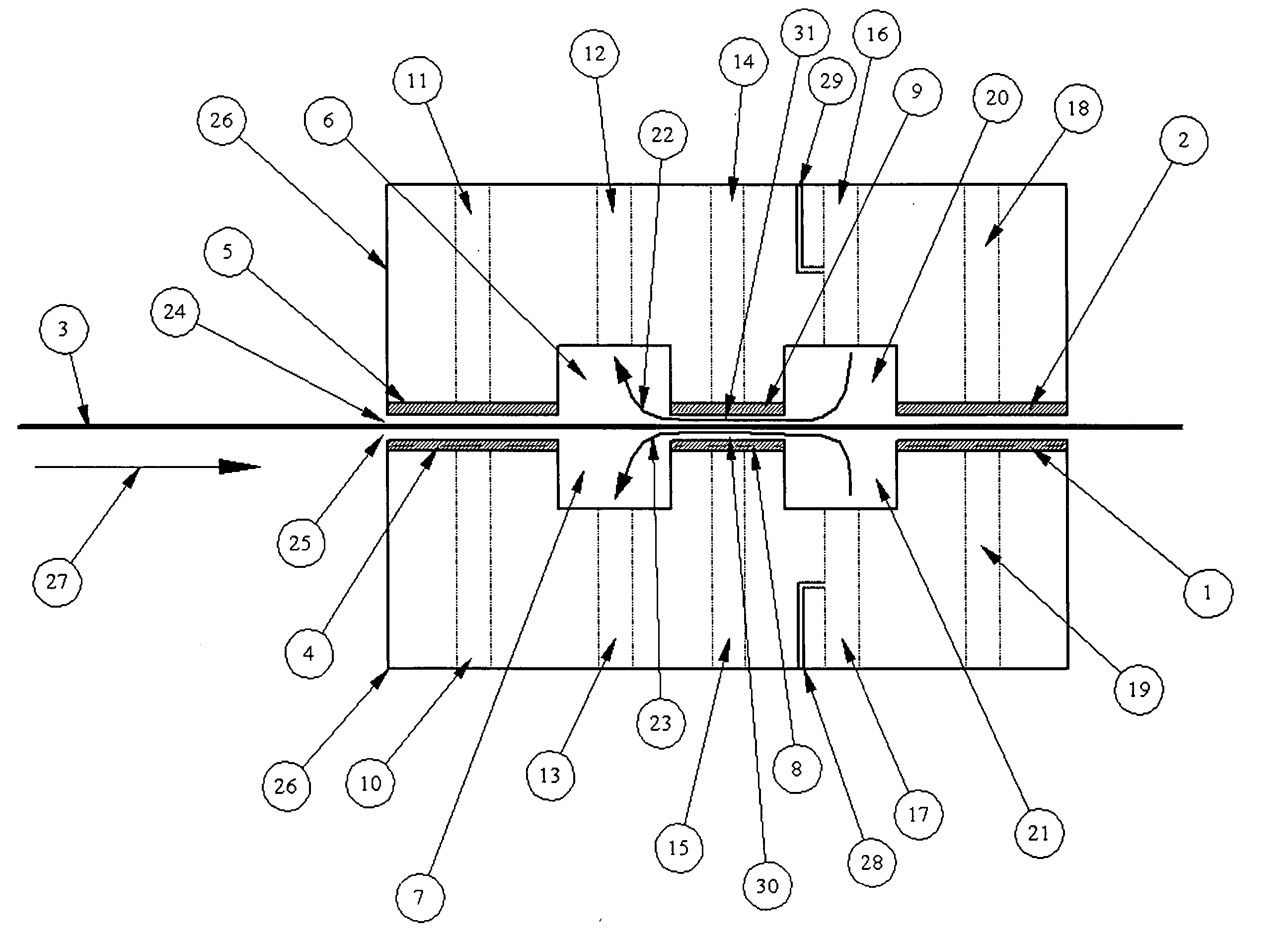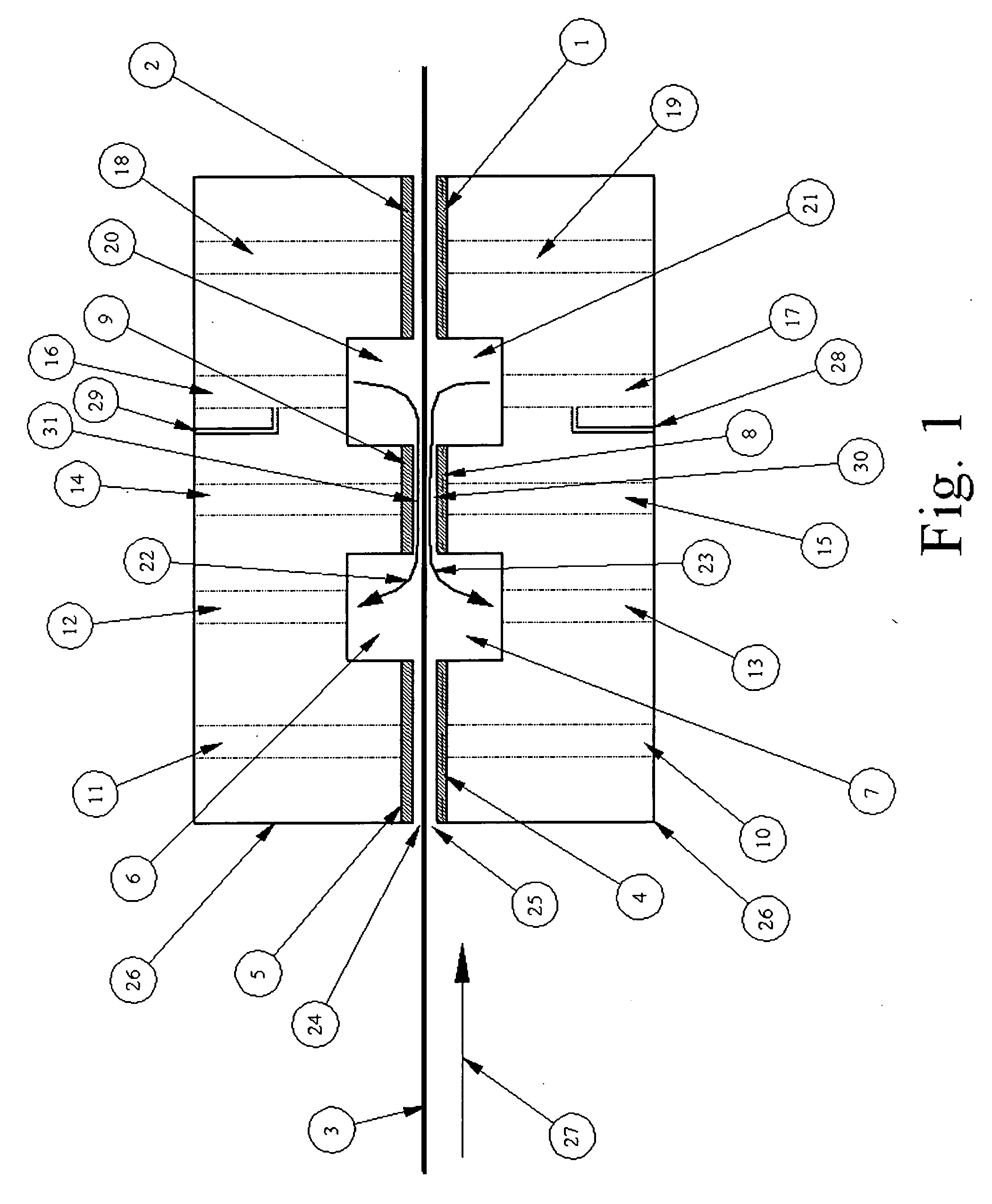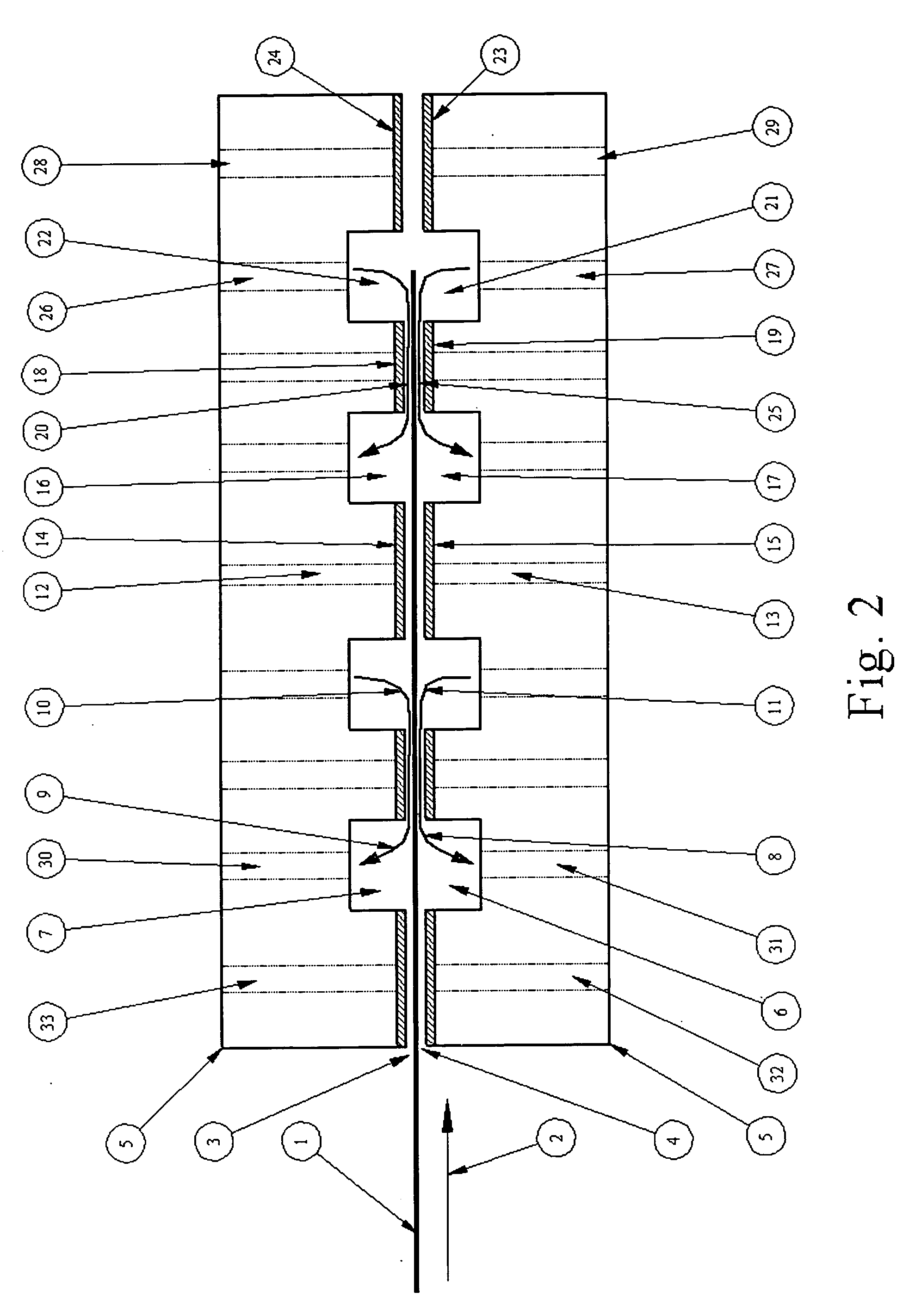Method and apparatus for in-line processing and immediately sequential or simultaneous processing of flat and flexible substrates through viscous shear in thin cross section gaps for the manufacture of micro-electronic circuits or displays
a micro-electronic circuit or display, in-line processing technology, applied in mechanical devices, cleaning using liquids, manufacturing tools, etc., can solve the problems of affecting the quality of glass, and difficult handling of glass brittleness, so as to reduce the amount of floor space required, and save the effect of large cost savings
- Summary
- Abstract
- Description
- Claims
- Application Information
AI Technical Summary
Benefits of technology
Problems solved by technology
Method used
Image
Examples
Embodiment Construction
[0051] As will be understood by those skilled in the art, the present invention may be embodied in other specific forms or configurations without departing from the essential characteristics or spirit and scope thereof. Accordingly, the foregoing description is intended to be illustrative, but not limiting, of the scope of the invention which is set forth in the following claims. Thus it is intended that the present invention cover the modifications and variations of this intention provided they come within the scope of the appended claims and their equivalents.
[0052] Cleaning—Flat Substrate
[0053] Referring to FIG. 1 an upper hydrostatic or aerostatic bearing 5 is vertically disposed opposite a lower hydrostatic bearing 4 between which is supported a glass or other type of substrate 3. The bearing lands are charged with a fluid or air through passages 11, 10 supplied in the apparatus housings 26 at a pressure of anywhere between a few inches of water (less than 1 Psi) to 1000's of...
PUM
| Property | Measurement | Unit |
|---|---|---|
| pressure | aaaaa | aaaaa |
| flexible | aaaaa | aaaaa |
| pressure | aaaaa | aaaaa |
Abstract
Description
Claims
Application Information
 Login to View More
Login to View More - R&D
- Intellectual Property
- Life Sciences
- Materials
- Tech Scout
- Unparalleled Data Quality
- Higher Quality Content
- 60% Fewer Hallucinations
Browse by: Latest US Patents, China's latest patents, Technical Efficacy Thesaurus, Application Domain, Technology Topic, Popular Technical Reports.
© 2025 PatSnap. All rights reserved.Legal|Privacy policy|Modern Slavery Act Transparency Statement|Sitemap|About US| Contact US: help@patsnap.com



